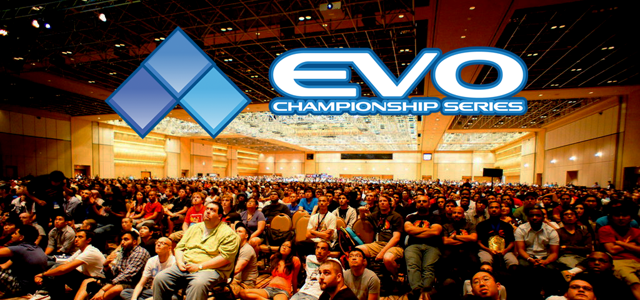In case you missed part 1 of Games and Feminist Research Methodology, I’ll give you a brief overview of what I’m up to. My literature review is set up in a way to put fields into conversation that really aren’t in conversation. I make the argument that the research done in game studies has been incomplete (I personally believe that this is due to an over reliance on abstract, philosophical theories rather than on the work being done on materialism, FRM, neuroscience, posthumanism, and so on). But regardless of the reason, the games research on things like ethics and any empirical research has been (imho) conceptually stunted. One way that we can get at the things we are missing in game studies is to reground our methodology in feminist research methodology, which at its heart is contextual, situated, and purposeful.
Today I have two crucial theorists to talk about: Anne Balsamo and Donna Haraway.
Anne Balsamo is probably best known for her work in the mid nineties on the technological gendered body. Recently, she published a groundbreaking book that blurs the lines between culture and technology, studying the ways innovative practices manifest in the social/technological environment. She argues that “We need new ways of thinking about technology, culture, education, and the multidisciplinary practices of cultural reproduction that take form as a media rich documentaries, public interactive, creative pedagogy’s, digital scholarship, and new technologies of imagination” (197). She destroys the notion that culture can any longer be thought of from separate from technology and vice versa. She defines culture as “a socially shared symbolic system of signs and meanings” (5). In this sense, she is quite right that little of our culture remains isolated from the technological influence, and certainly every technological innovation has been steeped with cultural meaning and cultural consequences.
While Balsamo’s argument certainly helps establish the importance of the work I’m attempting to do in my dissertation, what I find most useful and revolutionary about her work—and also why I include her among the feminist methodologists—is that she argues that ethics, social identity, class, gender, race, ethnicity, community, and other social factors is inextricable from technology. That you cannot study technology without considering these cultural factors. Any picture you draw of technology without considering these is incomplete at best and irresponsible at worst.
So what does Balsamo want from this perspective (that I’m sure some would consider radical)? She wants people to “design for culture.” Designing for culture “directs technological innovators to consider such non-technological factors as a social values held by various classes, genders, races, and ethnic communities, as well as the levels of literacy parentheses technological, visual, and traditional) among intended users” (15). Because design both is shaped by and shapes the cultural, good design—according to Balsamo—is always situated at these messy intersections. It is but a dream of the modernist that we can study a program, an algorithm, a computer without considering these social factors.
Haraway
Donna Haraway’s work has been paramount to the dismantling of objectivity. Let me explain. Haraway, Distinguished Professor Emerita of the History of Consciousness, wrote a book in the nineties called Simians, Cyborgs, and Women, where she called into question the whole idea of scientific objectivity. For those who aren’t aware of this debate, I’ll give a quick breakdown:
In the eighties (and before, but this is probably when it became the most mainstream), theorists began to question whether or not any knowledge was outside of a social construction. What scientists do, believe, and say very much construct the so-called objective knowledge they purport. She exposed how truth and science are really rhetoric: “science—the real game in town, the one we must play—is rhetoric, the persuasion of the relevant social actors that one’s manufactured knowledge is a route to a desired form of very objective power” (184). As can be imagined, many people still struggle with these notions, and truth and science are still used as infallible proof. She in particular looks at what these so-called truth claims by science have done to women and bodies, positing the idea of embodied knowledge and situated knowledge.
So, via Haraway, embodied or situated knowledge becomes a foundational principle for feminist research methodology (a principle that is still contested, and one that has certainly not been adopted by video game theorists. Because video game worlds seem so defined (ie. the game is coded and theoretically is static), there has been a rush of theorists who bring back these outdated notions of objectivity, ignoring all the work that has been done in the last 25 years on embodied knowledge, practice, and situated knowledge. The thing, though, is that just because video games have numbers and algorithms that define much of its behavior, there is still always human interaction. Further, even if a game could somehow be analyzed separate from the human (which is not possible… because who would do the analyzing? Is a game a game without play? Without interaction? Existential thoughts for another time), there is always the possibility of the unknown: power failure, technological breakdown, viruses, and so on. Games are living—even “static” games are living because of the play emerges between player and game (simplistically) and that means that it’s always situated, always embodied, and always rhetorical.
Through Haraway, or rather through the breakthroughs that Haraway incites, I am able to ground feminist research methodology, and thus my critique of current game studies theory, in the body and in the emergent situation (this should start to sound very similar to my write up of Karen Barad 2 weeks ago). This calls into question much of the research that has been done by popular game studies theorists like Ian Bogost, but I shall leave that for another time as well.
Balsamo and Haraway make a critical foundational argument for my dissertation. They both call into question the idea that things exist objectively apart from the situation from which they emerge. In other words, they allow for me to question the idea that a static theory that doesn’t consider context could ever be useful or complete. Through strategies like Sullivan’s postmodern mapping (conceptually linked to both Balsamo and Haraway), we can start to see how the dogmatic philosophies that have been central to game studies are actually stunting our research and theories. And I think the FRM way, the way that is never predefined or limited or touts notions of objectivity and truth, is far, far more interesting anyway.




